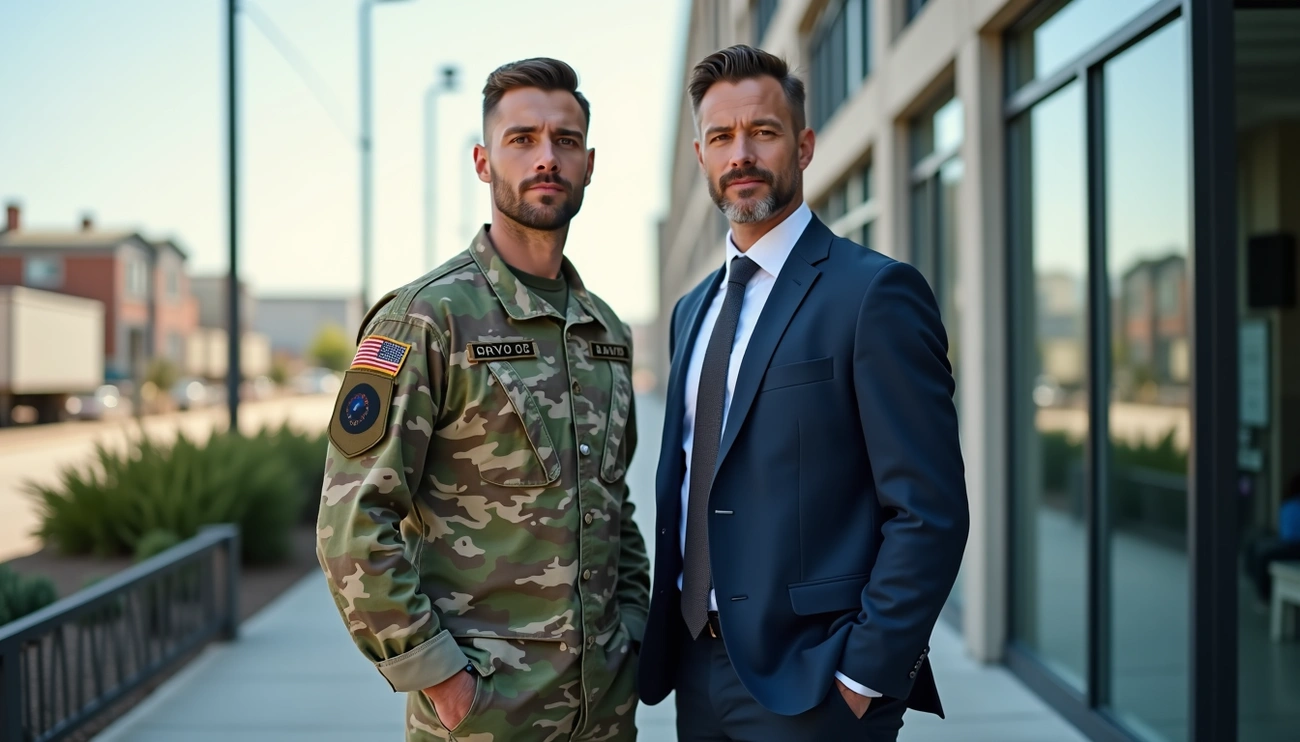About 200,000 service members start their transition experience to civilian life each year. This radical alteration requires them to adapt to new ways of living.
The path comes with many challenges. Many veterans who left service haven’t connected with resources and benefits that could help them. The situation becomes more concerning as 43% of service members can’t find jobs within three months after discharge. Veterans also struggle with health issues. Their suicide rates peak during the first three years after leaving military service. These facts show why complete transition assistance is vital.
Support programs have shown positive results. A VA program helped 13,000 veterans who lost their jobs during the COVID-19 pandemic by giving them housing money and education support. Yet service delivery still has gaps. More than 4,300 at-risk service members missed out on significant help between April 2021 and March 2023.
This piece will take you through the complex shift from military to civilian life. You’ll learn about key VAP programs that make a difference and ways to improve support for those who served our country.
Understanding the Transition From Military to Civilian Life
Image Source: Homefront Group
Veterans say returning to civilian life represents a deep cultural change, not just a new job. Between 27% and 44% of veterans find it hard to adjust back to civilian life. This number goes up to 44% for veterans who served after 9/11.
The transition brings several challenges at once. Finding a job stands out as the biggest challenge for one-third (33%) of veterans, who typically spend four months looking for civilian work. They also struggle to say goodbye to their military friends (28%), search for meaningful careers (28%), and deal with the loss of military structure (23%).
Studies show specific issues that make this transition harder. Veterans with trauma are 26 percentage points less likely to have an easy transition back. The same applies to veterans with serious service injuries, who are 19 percentage points less likely to adjust well.
Some factors help make the switch to civilian life easier. Veterans adjust better when they have higher education, serve as officers, understand their mission clearly during service, and attend religious services regularly.
Planning plays a vital role but many veterans overlook it. They often start preparing too late and don’t realize how much work it takes. Veterans who strongly identify with military life tend to put off career planning. Those who see their service as a step toward their future usually prepare earlier and do better in civilian life.
Key VAP Programs Supporting Veterans
The Veterans Affairs Program (VAP) runs several specialized initiatives that help service members transition from military to civilian life.
The DOD SkillBridge program serves as the life-blood resource that connects service members with civilian work experience through training, apprenticeships, or internships during their final 180 days of service. Service member’s participation depends on their rank. E5 and below can participate for the full 180 days, while higher ranks have shorter timeframes. The program saw nearly 12,000 service members take this chance in just half of the fiscal year.
The Transition Assistance Program (TAP) is a cooperative interagency effort that provides tools and training for successful civilian employment. TAP’s well-laid-out approach has the Employment Fundamentals of Career Transition workshop that teaches essential job search tools. The Department of Labor Employment Workshop focuses on resume writing and interviewing skills.
The Veteran Rapid Retraining Assistance Program (VRRAP) allocated $17 billion through the American Rescue Plan of 2021 to help veterans affected by COVID-19. Veterans can receive up to 12 months of tuition, fees, and monthly housing allowance to train in high-demand jobs.
The Veteran Employment Through Technology Education Courses (VET TEC) provided specialized training in technology fields without using GI Bill benefits until April 2024. The program’s annual budget grew from $15 million to $45 million before ending.
Gaps and Opportunities in Current Support Systems

Image Source: ResearchGate
The current veteran transition support system has major gaps, despite heavy investment in resources. Recent data shows a troubling pattern – more than half of departing service members skipped their required two-day transition classes, and about 11,000 at-risk troops missed vital assistance. About 70% of military personnel don’t start their transition assistance until their final year of service.
Poor data collection creates more problems. Military services can’t track participation in programs like SkillBridge properly. This makes it hard to know what works and what needs fixing. The same issues show up in all 45 federal transition programs, where GAO found “numerous redundancies” and “weak oversight”.
The system’s focus on education instead of employment doesn’t help most veterans. While education benefits some veterans, most need immediate job support as they enter the workforce. The veteran support system costs billions but remains fragmented, which wastes resources and fails to help veterans who need it most.
The system could work better by using standard data collection methods and creating evidence-based implementation plans. Services should be customized for different veteran groups. Veterans would have an easier transition if resources focused on converting military skills to civilian jobs. Better teamwork between VA and community providers would also make a big difference.
Conclusion
The transition from military to civilian life creates many challenges for about 200,000 service members who leave service each year. These veterans must tackle multiple obstacles at once. They need to find meaningful work, adapt to civilian culture, and build new support networks. Many great programs exist to help during this crucial time. Yet gaps still exist in connecting these services to the people who need them most.
The numbers tell a clear story. About 43% of service members can’t find work in their first three months after leaving. More than half don’t connect with available resources until years after their discharge. The high suicide rates in the first three years after military discharge show we need better support systems that work.
Programs like DOD SkillBridge, Transition Assistance Program (TAP), and VRRAP give veterans great paths to civilian careers. In spite of that, these programs can’t reach their full potential. Thousands of at-risk troops get waivers for mandatory transition classes. Many service members start preparing too late in their separation process.
Without doubt, we can make the transition experience better. Better data collection would give us a full picture of how well these programs work. Moving resources to help veterans translate their military skills into civilian jobs would serve them better than focusing on education. Better teamwork between VA and community providers could fix the fragmented support system.
Successful transitions don’t just happen randomly. Veterans who plan well, get higher education, understand their mission during service, and have strong support networks find it easier to rejoin civilian life. Early preparation and targeted help offer the best path forward to support those who served our country with honor.
Key Takeaways
The transition from military to civilian life affects 200,000 service members annually and requires comprehensive support to address employment, cultural adaptation, and mental health challenges.
• Start transition planning early: Veterans who begin preparation more than a year before separation experience significantly better outcomes than those who wait until the final months.
• Leverage VAP programs strategically: DOD SkillBridge, TAP, and VRRAP offer valuable pathways, but only 50% of eligible service members utilize mandatory transition classes.
• Focus on employment over education: Most veterans enter the workforce directly after service, yet current programs disproportionately emphasize educational benefits rather than job-focused support.
• Address critical gaps in support: Over 4,300 at-risk service members missed crucial assistance recently, while 43% face unemployment within three months of discharge.
• Improve program coordination: The 45 federal transition programs suffer from redundancies and weak oversight, requiring standardized data collection and better inter-agency collaboration.
The key to successful civilian reintegration lies in early preparation, targeted employment assistance, and coordinated support systems that reach veterans when they need help most. With proper planning and comprehensive support, the challenging transition period can become a pathway to meaningful civilian careers and successful community integration.
FAQs
Q1. What are some key challenges veterans face when transitioning to civilian life? Veterans often struggle with finding employment, adapting to civilian culture, and establishing new support networks. Many experience unemployment within the first few months and face difficulties translating their military skills to civilian jobs.
Q2. How can veterans better prepare for the transition to civilian life? Early preparation is crucial. Veterans should start planning at least a year before separation, utilize available VAP programs like SkillBridge and TAP, and focus on translating their military skills to civilian job requirements.
Q3. What support programs are available to help veterans during their transition? Key programs include the DOD SkillBridge program, which offers civilian work experience, the Transition Assistance Program (TAP) for employment preparation, and the Veteran Rapid Retraining Assistance Program (VRRAP) for those impacted by COVID-19.
Q4. How long does it typically take for veterans to find civilian employment? On average, it takes veterans about four months to secure civilian jobs after leaving the military. However, this can vary depending on factors such as preparation, education level, and utilization of available support programs.
Q5. What improvements are needed in veteran transition support systems? There’s a need for better data collection and analysis of program effectiveness, increased focus on employment rather than education, and improved coordination between VA and community providers. Ensuring at-risk service members receive mandatory transition assistance is also crucial.


Leave a Reply